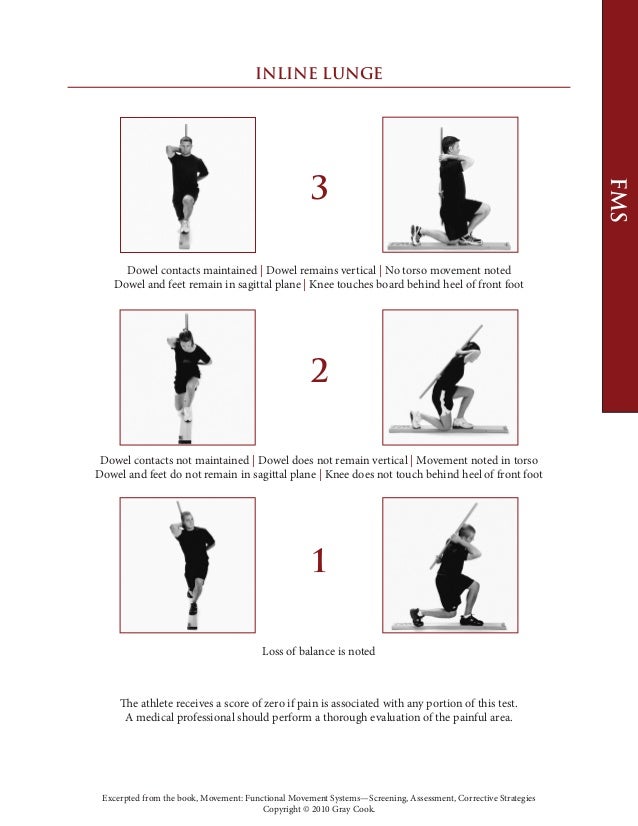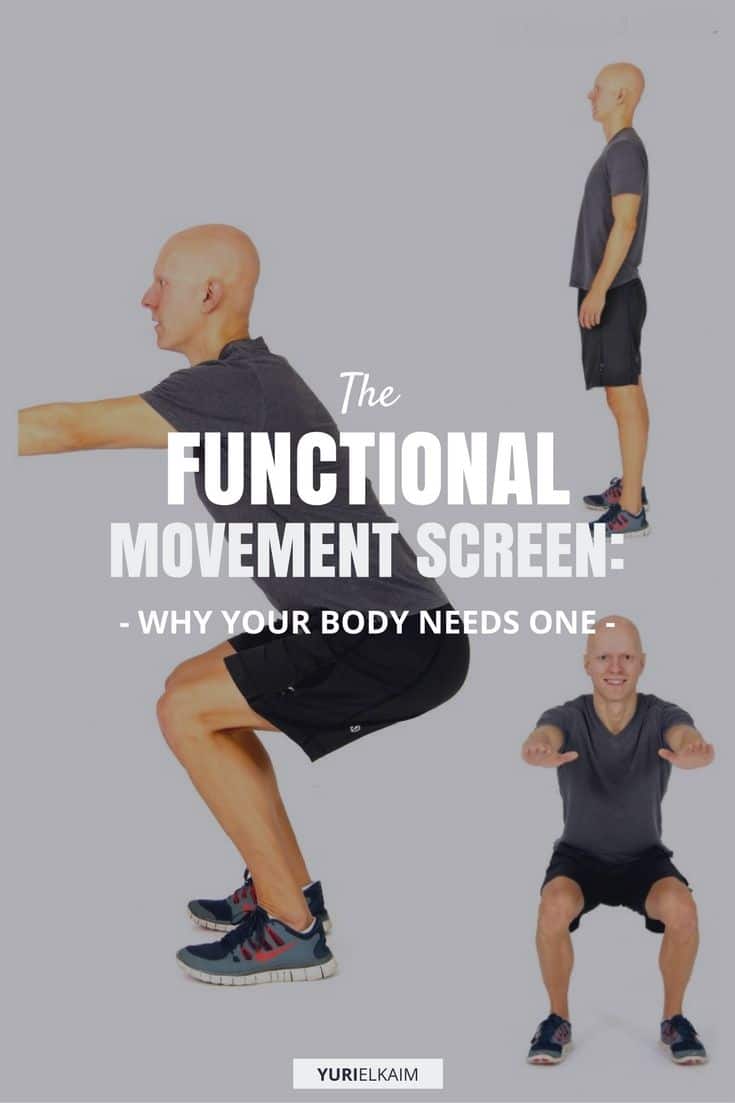Sep 14, 2015 Movement is a vivid discovery, a fundamental and explicit teaching in which the return to basics takes on a whole new meaning. In it, author Gray Cook crosses the lines between rehabilitation, conditioning and fitness, providing a clear model and a common language under which fitness and rehabilitation professionals can work together. To the FMS™, the future of functional movement screening, and the concept of movement as a system. Key Words: Function, movement screening, movement system Level of Evidence: 5 IJSPT CLINICAL COMMENTARYFUNCTIONAL MOVEMENT SCREENING: THE USE OF FUNDAMENTAL MOVEMENTS AS AN ASSESSMENT OF FUNCTION PART 2 Gray Cook, PT, OCS1 Lee Burton PhD, ATC2.
- Gray Cook Movement Pdf
- Gray Cook Movement Screen
- Gray Cook Functional Movement Screen Download Windows 7
Gray Cook Movement Pdf


Upper torso is parallel with tibia or toward v ertical | Femur below horizontal Knees are aligned over f eet | Dowel aligned over feet
2 Upper torso is parallel with tibia or toward v ertical | Femur is below horizontal Knees are aligned over feet | Dowel is aligned over feet | Heels are elevated
1 Tibia and upper torso are not p arallel | Femur is not below horizontal Knees are not aligned over feet | Lumbar flexion is noted The athlete receives a score of zero if pain is associated with any portion of this test. A medical professional should perform a thorough evaluation of the painful a rea.
Excerpted from the book, Movement: Functional Movement Systems—Screening, Assessment, Corrective Strategies Copyright © 2010 Gray Cook.
FMS
3
FMS
HURDLE STEP
3 Hips, knees and ankles remain aligned in the sagittal plane Minimal to no movement is noted in lumbar spine | Dowel and hurdle remain p arallel
2 Alignment is lost between hips, knees and ankles | Movement is noted in lumbar spine Dowel and hurdle do not remain parallel
1 Contact between foot and hurdle occurs | Loss of balance is n oted
The athlete receives a score of zero if pain is associated with any portion of this test. A medical professional should perform a thorough evaluation of the painful a rea.
Excerpted from the book, Movement: Functional Movement Systems—Screening, Assessment, Corrective Strategies Copyright © 2010 Gray Cook.
INLINE LUNGE
Dowel contacts maintained | Dowel remains vertical | No torso movement noted Dowel and feet remain in sagittal plane | Knee touches board behind heel of front f oot
2 Dowel contacts not maintained | Dowel does not remain vertical | Movement noted in torso Dowel and feet do not remain in sagittal plane | Knee does not touch behind heel of front f oot
1 Loss of balance is n oted
The athlete receives a score of zero if pain is associated with any portion of this test. A medical professional should perform a thorough evaluation of the painful a rea.
Excerpted from the book, Movement: Functional Movement Systems—Screening, Assessment, Corrective Strategies Copyright © 2010 Gray Cook.
FMS
3
FMS
SHOULDER MOBILITY
3 Fists are within one hand length
2 Fists are within one-and-a-half hand lengths
1 Fists are not within one and half hand lengths
The athlete will receive a score of zero if pain is associated with any portion of this test. A medical professional should perform a thorough evaluation of the painful a rea.
Clearing Test Perform this clearing test bilaterally. If the individual does receive a positive score, document both scores for future reference. If there is pain associated with this movement, give a score of zero and perform a thorough evaluation of the shoulder or refer o ut.
Excerpted from the book, Movement: Functional Movement Systems—Screening, Assessment, Corrective Strategies Copyright © 2010 Gray Cook.
ACTIVE STRAIGHT-LEG RAISE
Vertical line of the malleolus resides between mid-thigh and ASIS The non-moving limb remains in neutral position
2 Vertical line of the malleolus resides between m id-thigh and joint line The non-moving limb remains in neutral p osition
1 Vertical line of the malleolus resides below joint line The non-moving limb remains in neutral p osition
The athlete will receive a score of zero if pain is associated with any portion of this test. A medical professional should perform a thorough evaluation of the painful a rea.
Excerpted from the book, Movement: Functional Movement Systems—Screening, Assessment, Corrective Strategies Copyright © 2010 Gray Cook.
FMS
3
TRUNK STABILITY PUSHUP
FMS
3 The body lifts as a unit with no lag in the spine
Men perform a repetition with thumbs aligned with the top of the h ead Women perform a repetition with thumbs aligned with the c hin
2 The body lifts as a unit with no lag in the s pine Men perform a repetition with thumbs aligned with the c hin | Women with thumbs aligned with the c lavicle
1 Men are unable to perform a repetition with hands aligned with the chin Women unable with thumbs aligned with the clavicle The athlete receives a score of zero if pain is associated with any portion of this test. A medical professional should perform a thorough evaluation of the painful a rea.
Spinal Extension Clearing T est Spinal extension is cleared by performing a press-up in the pushup position. If there is pain associated with this motion, give a zero and perform a more thorough evaluation or refer out. If the individual does receive a positive score, document both scores for future r eference.
Excerpted from the book, Movement: Functional Movement Systems—Screening, Assessment, Corrective Strategies Copyright © 2010 Gray Cook.
ROTARY STABILITY
3
2 Performs a correct diagonal r epetition
1 Inability to perform a diagonal r epetition The athlete receives a score of zero if pain is associated with any portion of this test. A medical professional should perform a thorough evaluation of the painful a rea.
Spinal Flexion Clearing T est Spinal flexion can be cleared by first assuming a quadruped position, then rocking back and touching the buttocks to the heels and the chest to the thighs. The hands should remain in front of the body, reaching out as far as possible. If there is pain associated with this motion, give a zero and perform a more thorough evaluation or refer out. If the individual receives a positive score, document both scores for future r eference. Excerpted from the book, Movement: Functional Movement Systems—Screening, Assessment, Corrective Strategies Copyright © 2010 Gray Cook.
FMS
Performs a correct unilateral repetition
Gray Cook Movement Screen
Movement is a vivid discovery, a fundamental and explicit teaching in which the return to basics takes on a whole new meaning. In it, author Gray Cook crosses the lines between rehabilitation, conditioning and fitness, providing a clear model and a common language under which fitness and rehabilitation professionals can work together. By using systematic logic and revisiting the natural developmental principals all infants employ as they learn to walk, run and climb, Gray forces a new look at motor learning, corrective exercise and modern conditioning practices.The discoveries, lessons and approaches youll learn—
Gray Cook Functional Movement Screen Download Windows 7
* How to view and measure movement quality alongside quantity* How to ascertain dysfunctional patterns with the Functional Movement Screen* What clinicians need to know about the Selective Functional Movement Assessments* When to apply corrective strategies and how to determine which strategies to use* How to map movement patterns and understand movement as a behavior and not just as a mechanical ideaThis book is not simply about the anatomy of moving structures. Rather, it serves a broader purpose to help the reader understand authentic human movement, and how the brain and body create and learn movement patterns. Our modern dysfunctions are a product of our isolated and incomplete approaches to exercise imposed on our sedentary lifestyles.A return to movement principles can create a more comprehensive exercise and rehabilitation model, a model that starts with movement.

